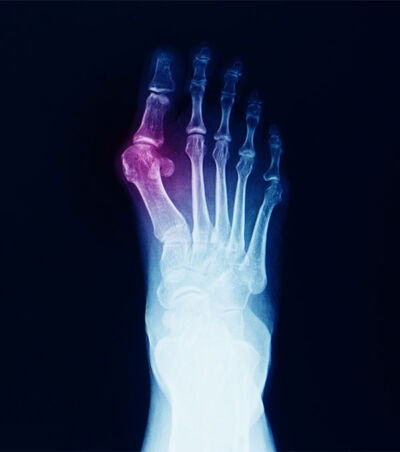
What is a Wide Toe Box in Shoes
You may be forgiven for thinking this is a no brainer, but read a few online articles and you’ll soon get confused! Here we’ll attempt to clear some of the confusion.
What is the Toe Box?
The toe box is the part of the shoe that surrounds your toes. There doesn’t seem to be any widespread agreement over where it starts, which could be in front or behind the ball of the foot.
So What Does a Wide Toe Box Mean?
This is where it gets confusing. The meaning of ‘wide toe box’ varies depending on the source.

Wide at the Big Toe Joint
Some sources consider a wide toe box to be one that is wide at the ball of the foot, and much of the time the shoes they are discussing have a tapered tip.
It’s understandable that many people might assume that this makes sense, because when you visit a shoe shop, if they measure the width of your foot, they usually use a brannock device, which measures width across the ball of your foot.
It’s also understandable because many of us already have deformed toes from years of shoes with pointed toes.
Shoes which are wide at the big toe joint are often recommended for bunion sufferers, so that there is less pressure on the big toe joint which therefore helps to relieve pain. At face value it makes sense, but when you look closely at the position of the bones in a bunion sufferer’s foot, it starts to make less sense.
Take a look at the images above and you can see how with bunions, not only does the big toe start to turn inwards towards the other toes, but the big toe joint starts to shift wider out to the side.
Science has well documented that shoes can contribute to the formation of bunions when there is too little room for the big toes to sit in the correct anatomical position¹ ², so surely a shoe that gives extra space at the ball of the foot but less for the toes will actually make bunions worse?
Then there are shoes which are wide at the big toe joint that do have less of a pointed tip and are more rounded. There are some well known brands with shoes like this who also market their shoes to bunion sufferers.
These do seem to be an improvement as there’s less pressure on the big toe, however, there are unfortunately other factors that contribute to the formation of bunions, so a rounded tip alone will likely not be sufficient to prevent progression of the bunion.
But this is not just about people with bunions. Some people actually have feet that are…well…foot shaped!

Foot Shaped Shoes
Have you ever noticed that in most pictures you see of baby’s feet, they are triangular? And often, the toes splay out a little further than the ball of the foot?
Dr Ray McClanahan, podiatrist and barefoot shoes advocate, explains that this is a normal, natural foot shape³, and that when the toes start to point inwards, it’s often due to toe boxes that taper, therefore preventing the toes from sitting in the correct anatomical position, which affects circulation, balance, alignment, and gait.
To enable the toes to sit in the right position, a toe box actually needs to be widest at the toe end of the toe box. Especially when we take into account the fact that your toes spread as you walk.
How Do I Know If Shoes are Wide Enough?
The shoe liner test is a great place to start if you’re trying to figure out whether shoes are wide enough for your feet. If you’re buying shoes online, look for top down photos of the shoes and see if the toe box looks tapered.
We also have a Barefoot Shoe Shopping Guide with even more detail.



Get Social…